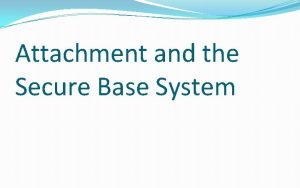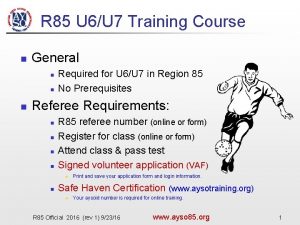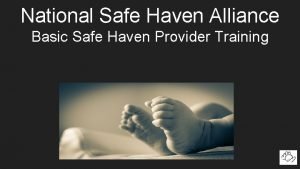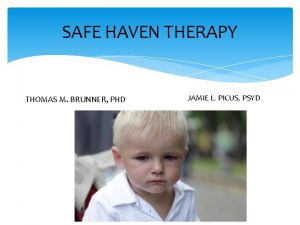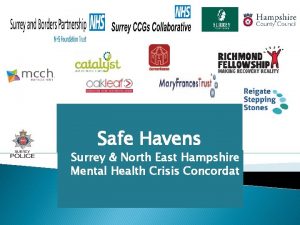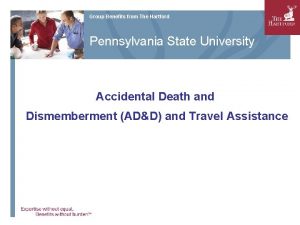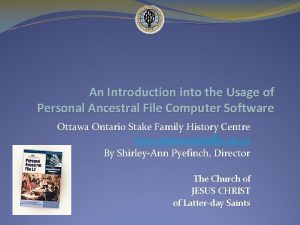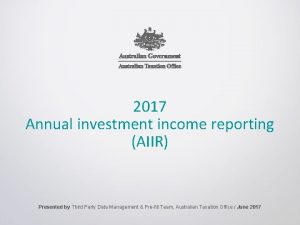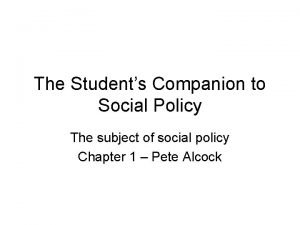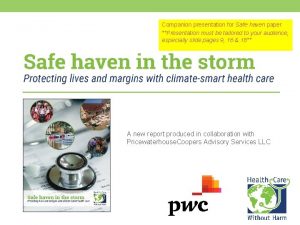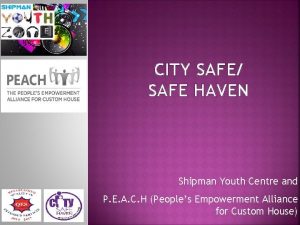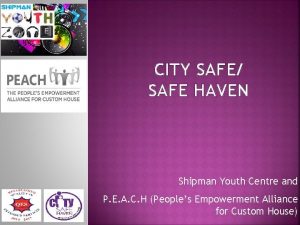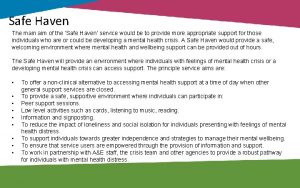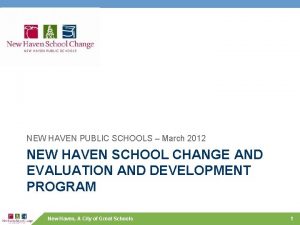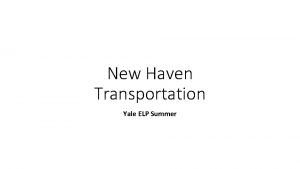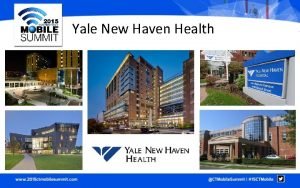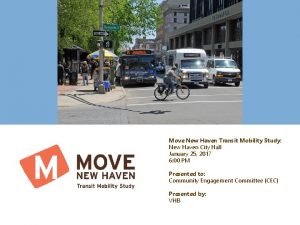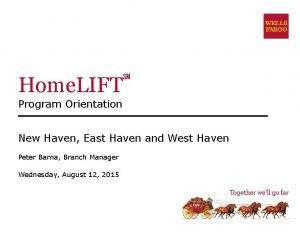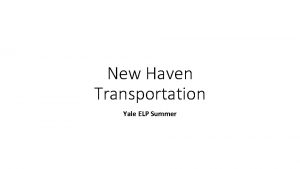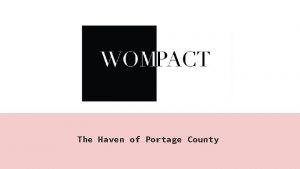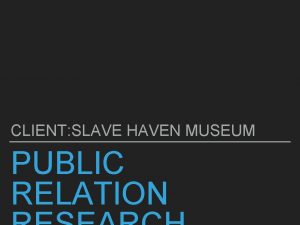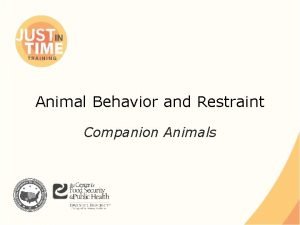Companion presentation for Safe haven paper Presentation must








![[HEALTH SYSTEM NAME] • Which extreme weather events might impact your hospital or health [HEALTH SYSTEM NAME] • Which extreme weather events might impact your hospital or health](https://slidetodoc.com/presentation_image/5df170ca7bcbd4705c72d616afde61fe/image-9.jpg)






![[HEALTH SYSTEM NAME] Current Status: share information on your: 1. Inclusion of climate risks [HEALTH SYSTEM NAME] Current Status: share information on your: 1. Inclusion of climate risks](https://slidetodoc.com/presentation_image/5df170ca7bcbd4705c72d616afde61fe/image-16.jpg)

![[HEALTH SYSTEM NAME] What work is being planned, or that you would like to [HEALTH SYSTEM NAME] What work is being planned, or that you would like to](https://slidetodoc.com/presentation_image/5df170ca7bcbd4705c72d616afde61fe/image-18.jpg)



- Slides: 21

Companion presentation for Safe haven paper **Presentation must be tailored to your audience, especially slide pages 9, 16 & 18** A new report produced in collaboration with Pricewaterhouse. Coopers Advisory Services LLC

How to Use this Presentation This presentation was created to accompany, not replace Health Care Without Harm’s report, “Safe haven in the storm: Protecting lives and margins with climatesmart health care. ” Talking points are included. Full page images from the report are included to provide a taste, to inspire your audience to read it. The report’s font is often too small to read in this PPT. Background: Health Care Without Harm seeks to transform the health sector, without compromising patient safety or care, to be ecologically sustainable, and a leading advocate for environmental health and justice worldwide. Practice Greenhealth is the sector’s leading membership and networking organization advancing sustainable, environmentally preferable practices: a go-to source for information, tools, resources and expert technical support. The ‘Safe Haven’ Report was made possible thanks in part to support from the Barr Foundation, The Kresge Foundation, Mac. Arthur Foundation, Wallace Global Fund, and Pricewaterhouse. Coopers Advisory Services LLC. PLEASE DELETE THIS SLIDE BEFORE PRESENTING


On the front lines of climate change Mercy Medical Center, Cedar Rapids, IA, Credit Dr. Blaine Houmes / MMC

Why “Safe haven in the storm? ” Until now, there has not been a hospital-focused business case to ‘connect the dots’ between climate change, health impacts, health costs, and the viability of health care systems and hospitals.

What’s in “Safe haven in the storm? ” 1. The costs of being ill-prepared 2. The benefits of preparedness 3. How smart executives can take action: • A four-pronged approach • Health and Human Services (HHS) Toolkit & Hospital Preparedness Program • Focus on policy to increase options

Risks of being ill-prepared

Community The bottom line damages for health care Capital Direct Suspension or closure of key operations Near-term repairs for emergency fix of critical facilities Research losses Patient evacuation Long-term investments of infrastructure upgrades Reduced clinical demand Hazardous materials clean up Cancelled or postponed elective treatment Compliance costs Loss of market share Temporary disruption of critical supplies Change in longterm costs or availability of key supplies Personnel limitations Water Energy Food Supply Chain Indirect Emergency supplies of food & drinks Higher insurance premiums Medical supplies Less favorable terms with payers Impaired access to capital & research funding Operating Inability to secure top talent Greater electricity & gas usage Decreased personnel engagement & lower retention rates Overtime pay Reduced revenue Supply chain Increased costs Disruption Population loss Lower reimbursement rates Increased un/underinsured patients from event injury, illness, reduced ambulatory services, poverty, business failure Delays & reduced reimbursements from stressed insurers and government Additional hourly personnel Tax/PILOT Reduced gifts and/or investments Legal Gifts Purchased services Communications Investments Downward pressure on margin Capital Community: Disruption, increased cost, decreased revenue Costs of being illprepared Operating Direct Indirect Supply chain Operating Infrastructure Government Safety Taxes Revenue Delays & Interruptions
![HEALTH SYSTEM NAME Which extreme weather events might impact your hospital or health [HEALTH SYSTEM NAME] • Which extreme weather events might impact your hospital or health](https://slidetodoc.com/presentation_image/5df170ca7bcbd4705c72d616afde61fe/image-9.jpg)
[HEALTH SYSTEM NAME] • Which extreme weather events might impact your hospital or health system? • Share data here about the weather changes in your geography related to extreme weather. • Share data related to costs incurred by your hospital, health system or similar systems in your region(s) related to an extreme weather event (if applicable).


Benefits of preparedness

A lesson in preparedness: Texas Medical Center Hurricane Allison in 2001 Not prepared Hurricane Harvey in 2017 Open for business

Protecting Lives and Margins

How smart executives take action

First Steps in Preparedness Are climate risks included in your facility and regional emergency preparedness planning and implementation? Have you completed vulnerability assessments for your facilities?
![HEALTH SYSTEM NAME Current Status share information on your 1 Inclusion of climate risks [HEALTH SYSTEM NAME] Current Status: share information on your: 1. Inclusion of climate risks](https://slidetodoc.com/presentation_image/5df170ca7bcbd4705c72d616afde61fe/image-16.jpg)
[HEALTH SYSTEM NAME] Current Status: share information on your: 1. Inclusion of climate risks into your facility and regional emergency preparedness planning. 2. Assessments of your campus, system, and community infrastructure vulnerabilities. 3. Plans and actions to increase resilience for your top vulnerabilities: e. g. buildings, energy, water, food systems, and/or most vulnerable communities. 4. Efforts to address changes in clinical demand related to extreme events. 5. Mitigation of impacts on financials/margin.

Best practices for climate-smart policy advocacy • Track climate-related costs in clinical and facility operations, while • • actively seeking new climate, energy and resilience funding streams. Use cost data and health system expertise to collaborate with regional energy NGOs to assess policy risks and opportunities. Use data from items 1. and 2. above to educate and activate health care government affairs staff so they can engage on climate and energy issues. Add climate, energy, and resilience to hospital association and medical society agendas to increase leverage and lower engagement risks and costs. Participate in national efforts such as the Health Care Climate Council and Medical Society Consortium on Climate and Health • https: //noharm-uscanada. org/healthcareclimatecouncil • https: //medsocietiesforclimatehealth. org/.
![HEALTH SYSTEM NAME What work is being planned or that you would like to [HEALTH SYSTEM NAME] What work is being planned, or that you would like to](https://slidetodoc.com/presentation_image/5df170ca7bcbd4705c72d616afde61fe/image-18.jpg)
[HEALTH SYSTEM NAME] What work is being planned, or that you would like to do in the four action categories: 1. Investments in resilience to mitigate climate risk. 2. GHG emissions reduction. 3. Investments in community health. 4. Policy engagement.

Want to learn more? “Safe haven in the storm: Protecting lives and margins with climate-smart health care” https: //noharm-uscanada. org/safehaven Health Care Without Harm https: //noharm-uscanada. org/ Practice Greenhealth https: //practicegreenhealth. org/ Health Care Climate Council https: //noharm-uscanada. org/healthcareclimatecouncil “Resilience 2. 0: Healthcare’s Role in Anchoring Community Health and Resilience” https: //noharm-uscanada. org/Boston Optional: add key internal, regional or local resources


Building the Business Case for the Sector • If you have used this slide deck and would be interested in sharing information to help continually strengthen the business case for climate action, please share your customized slides and/or relevant financial information or analysis with Health Care Without Harm (see slide above for contact information). • We will only use data anonymously or in aggregate unless you indicate that you are interested in being featured as a case study.
 Ucl slms
Ucl slms Safe haven vs secure base
Safe haven vs secure base Ayso safe haven training definition
Ayso safe haven training definition National safe haven alliance
National safe haven alliance Safe haven therapy
Safe haven therapy Safe haven guildford
Safe haven guildford The hartford safe haven program
The hartford safe haven program Safe feed safe food
Safe feed safe food Safe people safe places
Safe people safe places He must become greater i must become less
He must become greater i must become less Companion form var
Companion form var When confusion's my companion
When confusion's my companion Phloem
Phloem Catia user companion
Catia user companion Breeds of companion animals dogs assessment
Breeds of companion animals dogs assessment Personal ancestral file download
Personal ancestral file download Depictive in tagalog
Depictive in tagalog I am your constant
I am your constant Cefrcv
Cefrcv Metaphor of companion
Metaphor of companion Aiir ato
Aiir ato The student's companion to social policy
The student's companion to social policy

